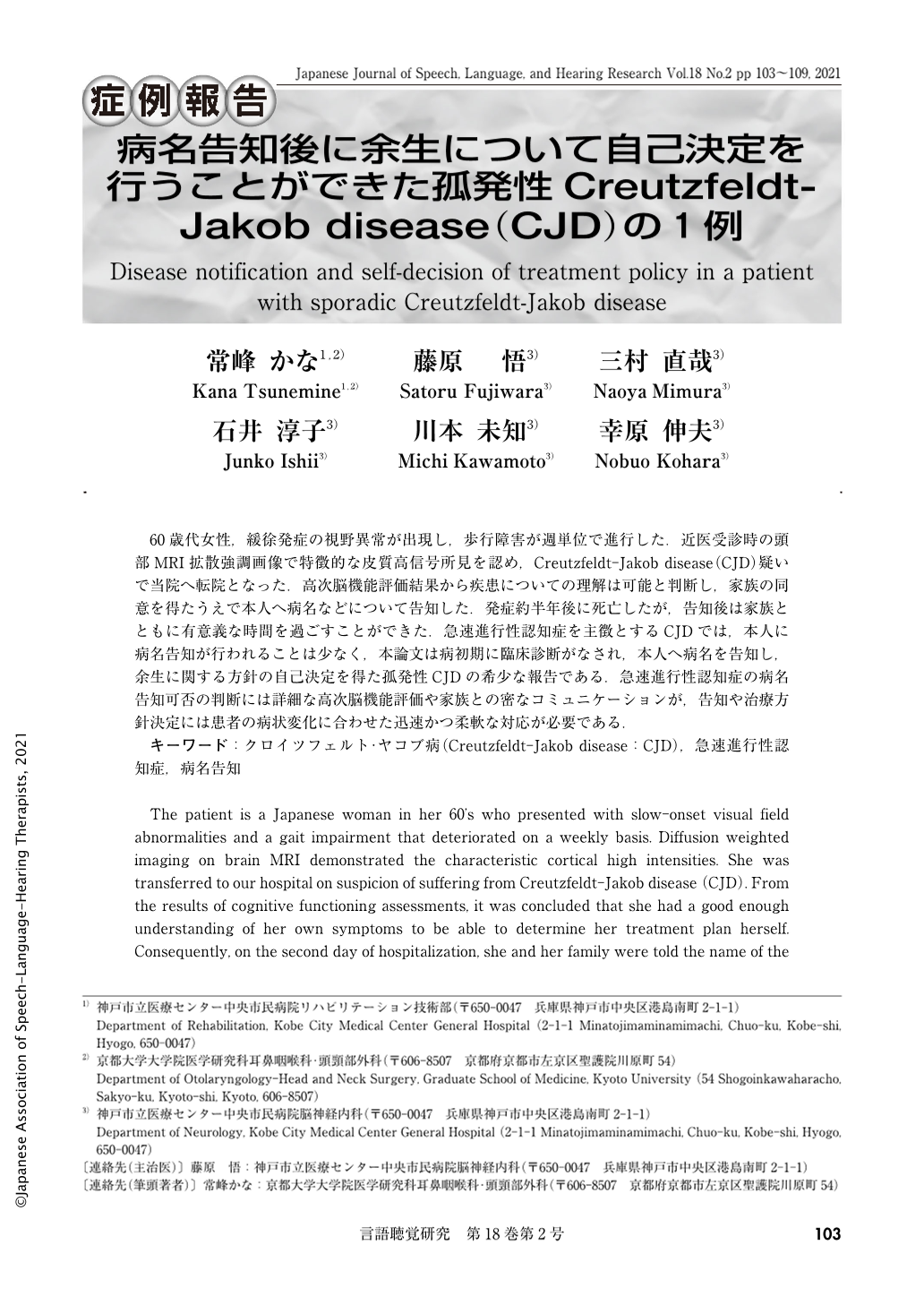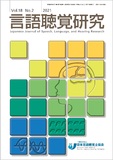Japanese
English
- 有料閲覧
- Abstract 文献概要
- 1ページ目 Look Inside
- 参考文献 Reference
60歳代女性,緩徐発症の視野異常が出現し,歩行障害が週単位で進行した.近医受診時の頭部MRI拡散強調画像で特徴的な皮質高信号所見を認め,Creutzfeldt-Jakob disease(CJD)疑いで当院へ転院となった.高次脳機能評価結果から疾患についての理解は可能と判断し,家族の同意を得たうえで本人へ病名などについて告知した.発症約半年後に死亡したが,告知後は家族とともに有意義な時間を過ごすことができた.急速進行性認知症を主徴とするCJDでは,本人に病名告知が行われることは少なく,本論文は病初期に臨床診断がなされ,本人へ病名を告知し,余生に関する方針の自己決定を得た孤発性CJDの希少な報告である.急速進行性認知症の病名告知可否の判断には詳細な高次脳機能評価や家族との密なコミュニケーションが,告知や治療方針決定には患者の病状変化に合わせた迅速かつ柔軟な対応が必要である.
The patient is a Japanese woman in her 60's who presented with slow-onset visual field abnormalities and a gait impairment that deteriorated on a weekly basis. Diffusion weighted imaging on brain MRI demonstrated the characteristic cortical high intensities. She was transferred to our hospital on suspicion of suffering from Creutzfeldt-Jakob disease (CJD). From the results of cognitive functioning assessments, it was concluded that she had a good enough understanding of her own symptoms to be able to determine her treatment plan herself. Consequently, on the second day of hospitalization, she and her family were told the name of the disease and other relevant information. Although, she passed away about six months after the onset, she was able to spend some meaningful time with her family after the notification. In patients with CJD, which is mainly characterized by rapidly progressive dementia, disease notification has been rare. The decision to disclose the truth to a patient with rapidly progressive dementia needs to be based on a detailed assessment of higher brain function and close contact with the family.

Copyright © 2021, Japanese Association of Speech-Language-Hearing Therapists. All rights reserved.


